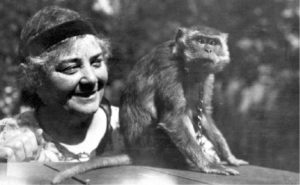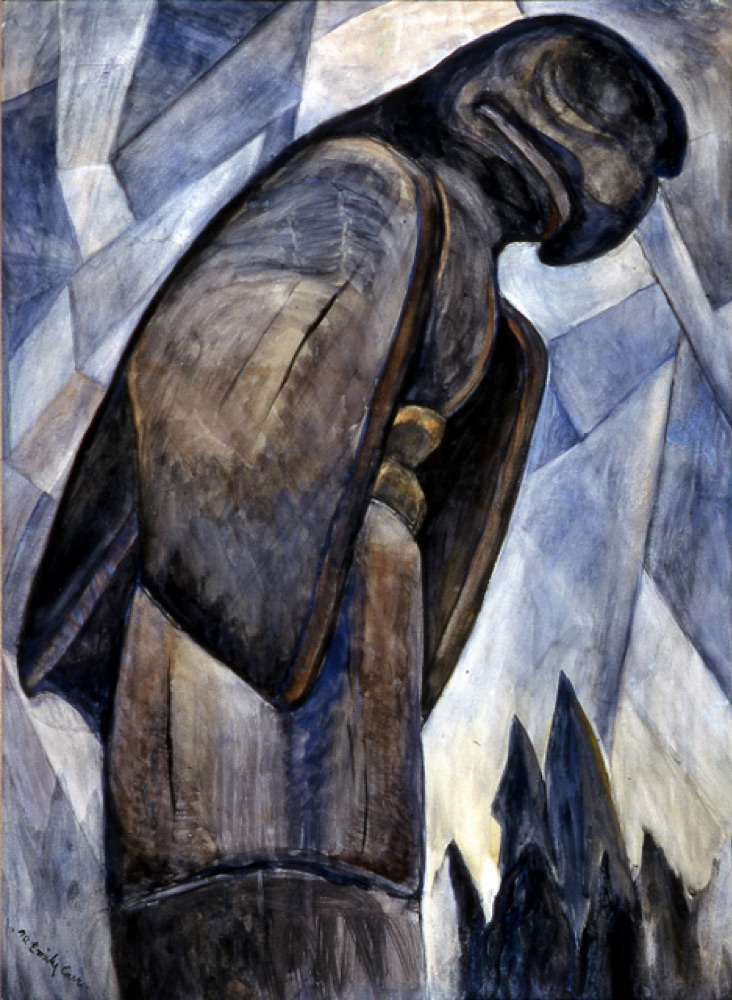wcag heading
“In the letter she said that her father had said something to her. Something horrible and unforgivable.”
“The Brutal Telling.”
“That’s how she described it.”
(The Brutal Telling)
If you’ve read Louise’s fifth novel in the Inspector Gamache Series, you’ll recognize this scene, in which Clara Morrow explains the phrase “The Brutal Telling”. The phrase was first used by the Modernist Canadian painter Emily Carr to describe a horrific falling out with her father.
 Here she is with her Javanese monkey, Woo, who plays an important part in Louise’s book. And as Superintendent Therese Brunel points out, “She adored all animals, but Woo above all.”
Here she is with her Javanese monkey, Woo, who plays an important part in Louise’s book. And as Superintendent Therese Brunel points out, “She adored all animals, but Woo above all.”
Carr was born in 1871 in British Columbia, one of nine children and, by all accounts, had a relatively stable childhood up until “The Brutal Telling” episode. Clara describes the mysterious incident to Inspector Gamache as thus, “She went from being a happy, carefree child to an embittered woman. Very solitary, not very likable.” Whatever terrible transgression took place (to this day, the details are unknown), it propelled Emily to travel to the isolated regions of Canada where she recorded, through her paintings, the vanishing indigenous cultures that resided there.
 The similarities between the real life Carr and Louise’s Clara are apparent. Both, of course, are painters and in a scene late in the novel, Superintendent Brunel and Clara sit before a statue of Carr where Therese tells Clara, “She looks a bit like you”. This is also the point in the book in which Brunel—while examining Clara’s painting —exclaims, “The Fall. My God, you’ve painted the Fall. That moment. She’s not even aware of it, is she? Not really, but she sees something, a hint of the horror to come. The Fall from Grace.”
The similarities between the real life Carr and Louise’s Clara are apparent. Both, of course, are painters and in a scene late in the novel, Superintendent Brunel and Clara sit before a statue of Carr where Therese tells Clara, “She looks a bit like you”. This is also the point in the book in which Brunel—while examining Clara’s painting —exclaims, “The Fall. My God, you’ve painted the Fall. That moment. She’s not even aware of it, is she? Not really, but she sees something, a hint of the horror to come. The Fall from Grace.”
The Fall from Grace. . . .
See our previous post on A Rule Against Murder and Milton’s Paradise Lost to see how deftly and deeply these novels interweave with one another. It really is quite amazing!
Oh, and remember Clara’s own description of Emily Carr? “. . . an embittered woman. Very solitary, not very likable.”
Kinda reminds me of a certain rascally poet who also has fondness for out-of-the-ordinary pets. . . .


